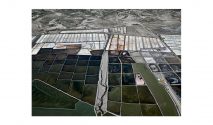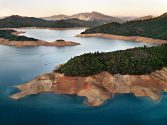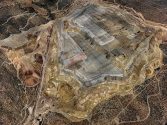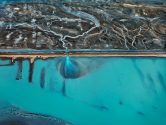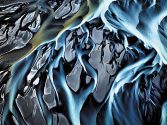
FIRST IMPRESSIONS: IMMACULATE surfaces, varied lines and shapes, contrasts and harmonies of color, rhythms and textures evoking an elusive sense of the familiar, of mystery, wonder, and delight in the interplay between precision and ambiguity, abstract patterns, designs, and suggestions of the representational with the possibility of evolving into the beautiful, the sublime, and the merely interesting that, as photography, challenges Benjamin’s lament of the destruction of aura ‘in the age of mechanical reproduction’. At first the exhibit seems a visual extravaganza without any apparent unifying theme, a polysemous conflation of works by different artists, even though the title clearly states that these are photographs from Edward Burtynsky’s Water Series. Slowly one focuses on individual photographs, responding to each on its own terms, and only then developing some understanding of visual and conceptual interrelationships within and among through shared associations and significant differences as the overwhelming initial reaction (if they were not contained within the solid black frames they might fly away) evolves into a sense of coherence.
Read More

